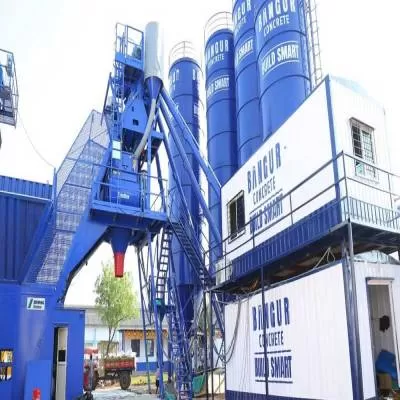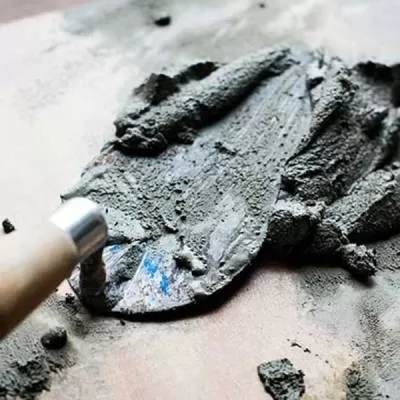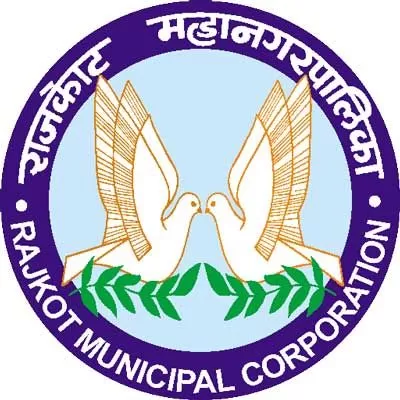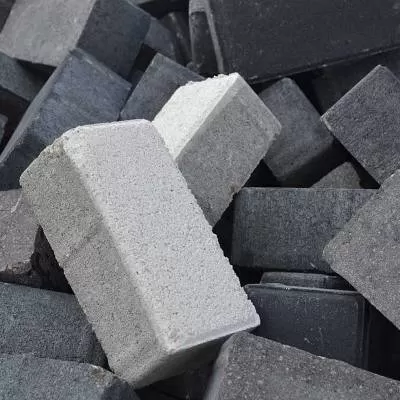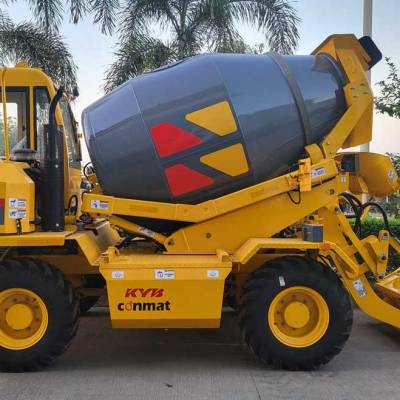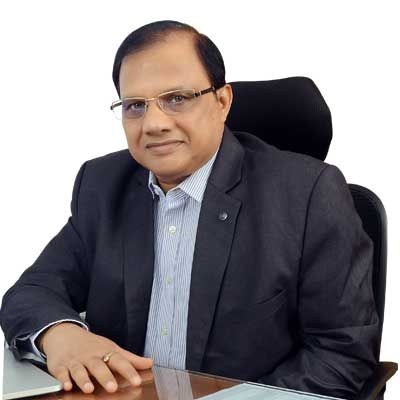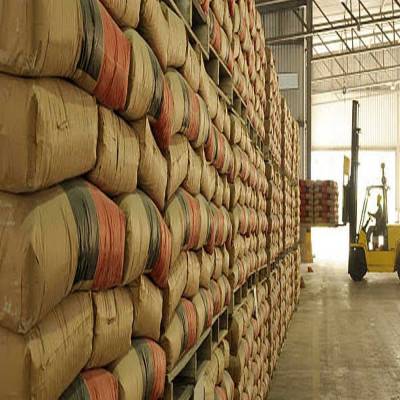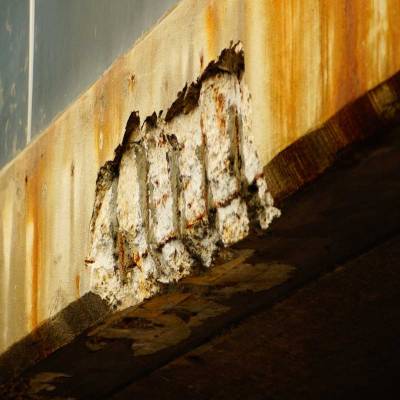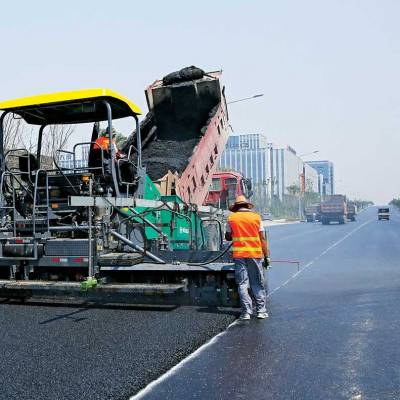- Home
- Building Material
- Concrete
- Investments in Concrete & Concrete Equipment

Investments in Concrete & Concrete Equipment
On the back of a medley of infrastructure projects, the concrete industry, from equipment to ready-mix concrete (RMC), is expanding. Industry voices expect real estate and city development to accentuate growth in the future.
Currently, we are seeing a boom in road projects, industries, ports, dams, wind energy and real estate,' says Ranjit More, Managing Director, Universal Construction Machinery & Equipment Ltd.
Lafarge is currently supplying concrete for the Jaipur, Delhi and Noida metro projects. Roads, flyovers, government-backed infra projects and airports are likely to boost the demand of concrete,' believes Frederic Guimbal, Chief of RMX and Aggregates, Lafarge India Ltd.
'We are getting a boost from government contractors engaged with flyovers, bridges, urban landscapes, etc,' opines Vairamuthu N, Executive Director, RDC Concrete (India) Pvt Ltd, India's largest standalone RMC company with 25 plants across the country. In future, he believes the government's push for smart cities will spur demand. 'Smart cities have brought several infrastructure projects to the forefront,' he adds. 'Among these, concrete roads, waterfronts, ports, aqua ducts and railway stations stand out as potential growth areas because these require huge quantities of RMC.'
Need for greater recognition of RMC
Demand for RMC will peak when organised cities come into being with relevant laws for construction that recognise the advantages of RMC, according to Vairamuthu, who estimates that on-site mix and environmentally unfriendly modes of construction enjoy 60 per cent of the market at present.
'We strongly advocate QCI-certified ready-mix plants and their recognition by making it mandatory to award public works contracts to contractors sourcing RMC from such plants,' he adds.
Custom-made concreting equipment
Today, there is huge demand for custom-made concreting equipment, according to More.
'Most construction companies executing large-scale projects need customised solutions,' opines VG Sakthikumar, Managing Director, Schwing Stetter Sales and Services Pvt Ltd, and Chairman of Mechanisation Committee, Builders Association of India.
Customised fit-for-purpose concreting assets can deliver higher productivity. Among Schwing Stetter's many innovative solutions is one to deliver aggregates at -10oC through a conveyor belt at the Subansri dam project site in the Northeast. Strong in-house R&D capabilities enhance a provider's ability to provide custom-made equipment and new models. For instance, Universal has come out with trailer-mounted concrete batching plants; 'A Universal innovation for applications where the plant needs to be shifted frequently, say in three to four days,' says More. Universal trailer-mounted batching plants are fully automatic, low maintenance, and come in 30, 45 and 60 cu m per hour capacity variants. The plants need no installation; you just plug in and start.
Some users depend on vendors to design customised solutions, others wear the innovation hat themselves (see box).
Growing demand for automation
Intelligent control systems in concreting equipment are the order of the day. 'Control systems enable easy operation and render the electrical system highly reliable,' opines More.
Automation is more relevant in batching plants than in concrete pumps and, nowadays, most standard batching plants feature automation as an in-built feature,' explains Sudhakar Waggh, Country Manager Service, Aquarius Engineers.
'Automated batching plants provide a complete record of inputs, output, mix design recipes, etc; this database can even be connected with SAP or ERP,' he adds. 'Such plants enhance accuracy by enabling timely corrections to the mix, like correcting the amount of water based on the moisture in sand. They also enable troubleshooting through online remote access. Monitoring becomes easier as integrated alarms can alert operators to problems.'
'Automation is vital in the concrete mixing system; it assures the quality of the concrete,' says Naresh Aggarwal, Managing Director, Bharat Cements. 'We also use automated transit mixer rotating systems and discharging systems, and in delivery systems from the transmit mixer to the pouring site.'
'Automation is also a good feature to have in truck-mounted concrete pumps where precision is essential,' adds Waggh.
Owned vs outsourced equipment
Companies engaged in concreting must decide whether to invest in equipment or hire or outsource a function.
Various reasons influence this decision.
Shree Balaji Construction, a company involved in the construction of real-estate towers in Mumbai, takes a call on whether to install a batching plant on site or buy RMC based on the quantity of concrete needed. At present, the company has deployed 13 batching plants to produce concrete for 29 sites in the city.
'Making concrete in a batching plant delivers a saving of Rs 1,200 to Rs 1,500 per cu m,' explains Diptesh Shah, Partner, Shree Balaji Construction. 'Factoring in the cost of the plant, the operational cost and the resale value of the plant (we retire plants after the output crosses 25,000 cu m of concrete), it makes sense to install a batching plant if the project entails more than 5,000 cu m of concrete, else we buy or mix. At the level of 5,000 cu m, we save Rs 60 lakh by installing a plant.'
Most RMC vendors prefer outsourcing the transportation of RMC to third-party vendors maintaining transit mixers. 'Outsourcing makes sense because P&M variable cost makes up 15 per cent of the total cost of RMC in cubic metre, including diesel, oil and lubricants, and repairs and maintenance, which is fairly high,' says Vairamuthu.
'Maintaining an in-house fleet would mean incurring increasing variable cost on growing volumes, whereas outsourcing the transit mixer fleet helps maintain or reduce the variable cost by increasing volumes.'
At RDC Concrete, innovative vendor management practices have helped keep costs low. 'We prefer supplying diesel and then paying based on mileage, ie kilometres covered,' he explains.
Indeed, innovation in equipment design and usage modes bode well for the Indian concreting industry.
Quick Bytes
- Boom for concrete in road projects, dams, industries, ports, wind energy and real estate.
- Real estate and city development to accentuate growth in future.
- Huge demand for custom-made concreting equipment; growing demand for automation in concreting equipment.
- Customised fit-for-purpose concreting assets deliver higher productivity.
Criteria for selecting a batching plant
What drives a construction company's choice of batching plant? CW explores: PLANT PHYSICAL SIZE AND FEATURES: Shree Balaji Construction, a company involved in the construction of multi-storied buildings, has deployed 13 batching plants to produce concrete for its sites in Mumbai. It only uses plants from Universal Construction Equipment, 'because those are compact (needing only 3,000 sq ft to 5,000 sq ft) and do not require silos to store the cement and fly-ash that the screw conveyor feeds,' explains Pravin Chopda, Partner, Shree Balaji Construction. Additionally, the plants are easy to operate, require minimal maintenance and are easily portable.
Portability: 'Lafarge uses M1 Stetter plants for manufacturing concrete as they can be easily moved, transported on low-bed semi-trailers and quickly set up because they are fully installed, pre-assembled compact units,' says Frederic Guimbal, Chief of RMX and Aggregates, Lafarge India Ltd. 'We have installed BC mix software in our plants to customise and optimise the raw materials mix according to the need of concrete.'
Capacity: 'We are currently using batching plants of 18 cu m per hour and 30 cu m per hour, based on demand,' says Naresh Aggarwal, Managing Director, Bharat Cements, which supplies concrete in and around its cement plant in Purulia, West Bengal. 'Market growth would enable us to switch to higher capacity plants, 30 cu m per hour and 60 cu m per hour.'
Availability of Spares: 'Batching plants are the core of our business,' says Sumanth Nath, National Sales Manager, RDC Concrete (India) Pvt Ltd. 'Over half of our batching plants are Schwing Stetter because they are predominantly the market leader with a wide penetration, so spare parts are easily available. We also have some plants from local manufacturers like Aquarius Engineers, Polytech Automation, Kirloskar and Greaves Cifa because their spares are widely available. We use Schwing Stetter, Sany, Sany HBT and Greaves concrete pumps because these are easily serviced. We use vacuum cement feeding machines from NMF to move cement into the silos and screw conveyors from NMF and WAM.'
Technology: 'We also have four Simem plants, Italian-made and highly efficient. Simem and Liebherr (German) plants produce a homogeneous mixture even if they can cost 50 per cent more than Indian machines,' adds Nath.
Choice of transit mixer and concrete pump
Transit mixers: Popular mixers are Ashok Leyland, Greaves, Schwing Stetter and Eicher, with most users choosing a vehicle based on the availability of spares. 'We prefer transmit mixers of 6 cu m capacity for logistical reasons,' says Naresh Aggarwal, Managing Director, Bharat Cements.
Concrete pumps: Stationary concrete pumps enjoy over 90 per cent of market share as they are more affordable and compact than truck-mounted boom pumps. In the truck-mounted boom pump segment, customers working on tight deadlines opt for larger models. During slowdowns when time is not critical, customers prefer smaller equipment, which poses a lower investment risk.
User-driven customisation of concrete equipment
Customisation is usually understood as meaning any adaptation of the batching plant or concrete pump to the specifications of a particular project or site. However, it also includes the adaptation of any smaller aspect of the concrete production or delivery process to solve a local challenge or enhance productivity. Here are some examples of user-driven customisation:
SPIRAL RAMP FOR FEEDER BINS: Shree Balaji Construction has customised the ramp for the feeder bins of its batching plants to accommodate one of its biggest challenges: A paucity of space on site. 'Instead of placing the ramps at an angle to the plant as is customary, we have created spiral ramps to accommodate site space constraints,' explains Pravin Chopda, Partner, Shree Balaji Construction. 'This different arrangement has proven useful for us.'
REMOTE-CONTROLLED FEEDER CONVEYORS: RDC Concrete usually deploys conveyors to transport raw materials to the batching plant. A front loader operator picks up material from the bins and loads it on to the conveyor belt. To enhance the productivity of this process, RDC Concrete has customised the operation of the conveyor belt so that the loader operator can turn it on and off remotely from his vehicle cabin.
SLUMP INDICATORS FOR BATCHING PLANTS: RDC Concrete has retrofitted electronic indicators in the cabins of its batching plants to get an idea of the slump in the mixer pan. Indicators cost less to install and maintain (easily calibrated) compared to more elaborate slump meters. Batchers monitor the slump of the mixture by keeping an eye on the indicator. If the indicator gives an indication of high or low slump, modifications are made to the mix before discharging the concrete into the transit mixer. The corrections made are automatically recorded in the batch slip sent to the customer. 'The traditional method for measuring slump is for a quality team member to physically climb into the transit mixer to check the mix consistency visually after loading was complete,' says Nath. 'Besides being a safety hazard, this is inaccurate as visual checks are unreliable.'
GPS FOR TRANSIT MIXERS: Lafarge has outsourced the transportation of concrete to operators of 6 cu m transit mixers. However, it has installed GPS devices in the transit mixers to track deliveries.
- charu bahri
To share your views on the Concrete and Concrete Equipment market in India, write in at feedback@ConstructionWorld.in
- RMC
- Construction
- Ranjit More
- Frederic Guimbal
- Vairamuthu N
- RDC Concrete (India) Pvt Ltd
- VG Sakthikumar
- Schwing Stetter Sales and Services Pvt Ltd
- Builders Association of India
- Concreting equipment
- Electrical system
- Sudhakar Waggh
- Naresh Aggarwal
- Bharat Cements
- Shree Balaji Construction
- Real estate
- Pravin Chopda
- Lafarge
- Polytech Automation
- Simem plants
- Ashok Leyland
- Greaves,
Construction companies and RMC providers are making smart investments in concreting assets, choosing equipment well, and hiring or outsourcing when it makes better financial sense. On the back of a medley of infrastructure projects, the concrete industry, from equipment to ready-mix concrete (RMC), is expanding. Industry voices expect real estate and city development to accentuate growth in the future. Currently, we are seeing a boom in road projects, industries, ports, dams, wind energy and real estate,' says Ranjit More, Managing Director, Universal Construction Machinery & Equipment Ltd. Lafarge is currently supplying concrete for the Jaipur, Delhi and Noida metro projects. Roads, flyovers, government-backed infra projects and airports are likely to boost the demand of concrete,' believes Frederic Guimbal, Chief of RMX and Aggregates, Lafarge India Ltd. 'We are getting a boost from government contractors engaged with flyovers, bridges, urban landscapes, etc,' opines Vairamuthu N, Executive Director, RDC Concrete (India) Pvt Ltd, India's largest standalone RMC company with 25 plants across the country. In future, he believes the government's push for smart cities will spur demand. 'Smart cities have brought several infrastructure projects to the forefront,' he adds. 'Among these, concrete roads, waterfronts, ports, aqua ducts and railway stations stand out as potential growth areas because these require huge quantities of RMC.' Need for greater recognition of RMC Demand for RMC will peak when organised cities come into being with relevant laws for construction that recognise the advantages of RMC, according to Vairamuthu, who estimates that on-site mix and environmentally unfriendly modes of construction enjoy 60 per cent of the market at present. 'We strongly advocate QCI-certified ready-mix plants and their recognition by making it mandatory to award public works contracts to contractors sourcing RMC from such plants,' he adds. Custom-made concreting equipment Today, there is huge demand for custom-made concreting equipment, according to More. 'Most construction companies executing large-scale projects need customised solutions,' opines VG Sakthikumar, Managing Director, Schwing Stetter Sales and Services Pvt Ltd, and Chairman of Mechanisation Committee, Builders Association of India. Customised fit-for-purpose concreting assets can deliver higher productivity. Among Schwing Stetter's many innovative solutions is one to deliver aggregates at -10oC through a conveyor belt at the Subansri dam project site in the Northeast. Strong in-house R&D capabilities enhance a provider's ability to provide custom-made equipment and new models. For instance, Universal has come out with trailer-mounted concrete batching plants; 'A Universal innovation for applications where the plant needs to be shifted frequently, say in three to four days,' says More. Universal trailer-mounted batching plants are fully automatic, low maintenance, and come in 30, 45 and 60 cu m per hour capacity variants. The plants need no installation; you just plug in and start. Some users depend on vendors to design customised solutions, others wear the innovation hat themselves (see box). Growing demand for automation Intelligent control systems in concreting equipment are the order of the day. 'Control systems enable easy operation and render the electrical system highly reliable,' opines More. Automation is more relevant in batching plants than in concrete pumps and, nowadays, most standard batching plants feature automation as an in-built feature,' explains Sudhakar Waggh, Country Manager Service, Aquarius Engineers. 'Automated batching plants provide a complete record of inputs, output, mix design recipes, etc; this database can even be connected with SAP or ERP,' he adds. 'Such plants enhance accuracy by enabling timely corrections to the mix, like correcting the amount of water based on the moisture in sand. They also enable troubleshooting through online remote access. Monitoring becomes easier as integrated alarms can alert operators to problems.' 'Automation is vital in the concrete mixing system; it assures the quality of the concrete,' says Naresh Aggarwal, Managing Director, Bharat Cements. 'We also use automated transit mixer rotating systems and discharging systems, and in delivery systems from the transmit mixer to the pouring site.' 'Automation is also a good feature to have in truck-mounted concrete pumps where precision is essential,' adds Waggh. Owned vs outsourced equipment Companies engaged in concreting must decide whether to invest in equipment or hire or outsource a function. Various reasons influence this decision. Shree Balaji Construction, a company involved in the construction of real-estate towers in Mumbai, takes a call on whether to install a batching plant on site or buy RMC based on the quantity of concrete needed. At present, the company has deployed 13 batching plants to produce concrete for 29 sites in the city. 'Making concrete in a batching plant delivers a saving of Rs 1,200 to Rs 1,500 per cu m,' explains Diptesh Shah, Partner, Shree Balaji Construction. 'Factoring in the cost of the plant, the operational cost and the resale value of the plant (we retire plants after the output crosses 25,000 cu m of concrete), it makes sense to install a batching plant if the project entails more than 5,000 cu m of concrete, else we buy or mix. At the level of 5,000 cu m, we save Rs 60 lakh by installing a plant.' Most RMC vendors prefer outsourcing the transportation of RMC to third-party vendors maintaining transit mixers. 'Outsourcing makes sense because P&M variable cost makes up 15 per cent of the total cost of RMC in cubic metre, including diesel, oil and lubricants, and repairs and maintenance, which is fairly high,' says Vairamuthu. 'Maintaining an in-house fleet would mean incurring increasing variable cost on growing volumes, whereas outsourcing the transit mixer fleet helps maintain or reduce the variable cost by increasing volumes.' At RDC Concrete, innovative vendor management practices have helped keep costs low. 'We prefer supplying diesel and then paying based on mileage, ie kilometres covered,' he explains. Indeed, innovation in equipment design and usage modes bode well for the Indian concreting industry. Quick Bytes Boom for concrete in road projects, dams, industries, ports, wind energy and real estate. Real estate and city development to accentuate growth in future. Huge demand for custom-made concreting equipment; growing demand for automation in concreting equipment. Customised fit-for-purpose concreting assets deliver higher productivity. Criteria for selecting a batching plant What drives a construction company's choice of batching plant? CW explores: PLANT PHYSICAL SIZE AND FEATURES: Shree Balaji Construction, a company involved in the construction of multi-storied buildings, has deployed 13 batching plants to produce concrete for its sites in Mumbai. It only uses plants from Universal Construction Equipment, 'because those are compact (needing only 3,000 sq ft to 5,000 sq ft) and do not require silos to store the cement and fly-ash that the screw conveyor feeds,' explains Pravin Chopda, Partner, Shree Balaji Construction. Additionally, the plants are easy to operate, require minimal maintenance and are easily portable. Portability: 'Lafarge uses M1 Stetter plants for manufacturing concrete as they can be easily moved, transported on low-bed semi-trailers and quickly set up because they are fully installed, pre-assembled compact units,' says Frederic Guimbal, Chief of RMX and Aggregates, Lafarge India Ltd. 'We have installed BC mix software in our plants to customise and optimise the raw materials mix according to the need of concrete.' Capacity: 'We are currently using batching plants of 18 cu m per hour and 30 cu m per hour, based on demand,' says Naresh Aggarwal, Managing Director, Bharat Cements, which supplies concrete in and around its cement plant in Purulia, West Bengal. 'Market growth would enable us to switch to higher capacity plants, 30 cu m per hour and 60 cu m per hour.' Availability of Spares: 'Batching plants are the core of our business,' says Sumanth Nath, National Sales Manager, RDC Concrete (India) Pvt Ltd. 'Over half of our batching plants are Schwing Stetter because they are predominantly the market leader with a wide penetration, so spare parts are easily available. We also have some plants from local manufacturers like Aquarius Engineers, Polytech Automation, Kirloskar and Greaves Cifa because their spares are widely available. We use Schwing Stetter, Sany, Sany HBT and Greaves concrete pumps because these are easily serviced. We use vacuum cement feeding machines from NMF to move cement into the silos and screw conveyors from NMF and WAM.' Technology: 'We also have four Simem plants, Italian-made and highly efficient. Simem and Liebherr (German) plants produce a homogeneous mixture even if they can cost 50 per cent more than Indian machines,' adds Nath. Choice of transit mixer and concrete pump Transit mixers: Popular mixers are Ashok Leyland, Greaves, Schwing Stetter and Eicher, with most users choosing a vehicle based on the availability of spares. 'We prefer transmit mixers of 6 cu m capacity for logistical reasons,' says Naresh Aggarwal, Managing Director, Bharat Cements. Concrete pumps: Stationary concrete pumps enjoy over 90 per cent of market share as they are more affordable and compact than truck-mounted boom pumps. In the truck-mounted boom pump segment, customers working on tight deadlines opt for larger models. During slowdowns when time is not critical, customers prefer smaller equipment, which poses a lower investment risk. User-driven customisation of concrete equipment Customisation is usually understood as meaning any adaptation of the batching plant or concrete pump to the specifications of a particular project or site. However, it also includes the adaptation of any smaller aspect of the concrete production or delivery process to solve a local challenge or enhance productivity. Here are some examples of user-driven customisation: SPIRAL RAMP FOR FEEDER BINS: Shree Balaji Construction has customised the ramp for the feeder bins of its batching plants to accommodate one of its biggest challenges: A paucity of space on site. 'Instead of placing the ramps at an angle to the plant as is customary, we have created spiral ramps to accommodate site space constraints,' explains Pravin Chopda, Partner, Shree Balaji Construction. 'This different arrangement has proven useful for us.' REMOTE-CONTROLLED FEEDER CONVEYORS: RDC Concrete usually deploys conveyors to transport raw materials to the batching plant. A front loader operator picks up material from the bins and loads it on to the conveyor belt. To enhance the productivity of this process, RDC Concrete has customised the operation of the conveyor belt so that the loader operator can turn it on and off remotely from his vehicle cabin. SLUMP INDICATORS FOR BATCHING PLANTS: RDC Concrete has retrofitted electronic indicators in the cabins of its batching plants to get an idea of the slump in the mixer pan. Indicators cost less to install and maintain (easily calibrated) compared to more elaborate slump meters. Batchers monitor the slump of the mixture by keeping an eye on the indicator. If the indicator gives an indication of high or low slump, modifications are made to the mix before discharging the concrete into the transit mixer. The corrections made are automatically recorded in the batch slip sent to the customer. 'The traditional method for measuring slump is for a quality team member to physically climb into the transit mixer to check the mix consistency visually after loading was complete,' says Nath. 'Besides being a safety hazard, this is inaccurate as visual checks are unreliable.' GPS FOR TRANSIT MIXERS: Lafarge has outsourced the transportation of concrete to operators of 6 cu m transit mixers. However, it has installed GPS devices in the transit mixers to track deliveries. - charu bahri To share your views on the Concrete and Concrete Equipment market in India, write in at feedback@ConstructionWorld.in


